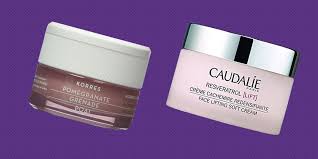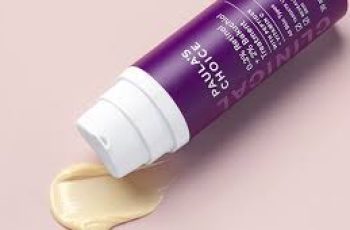
Polyphenols In Skin Care Products
Polyphenols in skin care products have many benefits such as anti-inflammatory, skin lightening and antiaging and are found in organic, clean, and natural skin care products.
Phenols is the name of a large group of compounds. You will not see “polyphenol” on skin care product labels, but you will see the ingredient that is a member of the polyphenol compound family as seen in the list below.
List of Types of Polyphenols in Skin Care Products
You will not find polyphenols on skincare product labels because they are a component found in skincare ingredients.
See the table below for a list of classes and categories of polyphenols and which skin care ingredients contain polyphenols.
Polyphenols are a diverse group of naturally occurring compounds found in plants. They can be divided into several classes based on their structural features and the number of phenol rings they contain:
Flavonoids: This is the largest and most studied group of polyphenols. They can be further divided into several subclasses:
Flavonols (e.g., quercetin, kaempferol)
Flavones (e.g., apigenin, luteolin)
Flavanones (e.g., hesperidin, naringenin)
Flavan-3-ols (also known as flavanols; e.g., catechins like those found in green tea, epicatechin)
Anthocyanins (e.g., cyanidin, delphinidin; responsible for the red, blue, and purple colors in many fruits and vegetables)
Isoflavones (e.g., genistein, daidzein; commonly found in soy products)
Phenolic acids: These are divided into two main types:
Hydroxybenzoic acids (e.g., gallic acid, vanillic acid)
Hydroxycinnamic acids (e.g., caffeic acid, ferulic acid, p-coumaric acid)
Polyphenolic amides:
Examples include capsaicinoids in chili peppers and avenanthramides in oats.
Lignans: They are found in seeds, particularly flaxseeds, as well as in grains and vegetables.
Examples: secoisolariciresinol, matairesinol
Stilbenes: Resveratrol, found in grapes and red wine, is the most well-known compound in this class.
Other polyphenols: There are other polyphenolic compounds that don’t fit neatly into the above categories, like ellagitannins and ellagic acid, often found in berries.
Polyphenol Classification Table
To find skincare products or supplements that contain polyphenols, look for the ingredients in the Polyphenol Table above.
Polyphenol Benefits for Health
Polyphenols are found in supplements, skin care products, drinks, and foods. They are good for your health for many reasons. They are one of the reasons that a plant-based diet is so healthy.
Polyphenols offer a plethora of additional benefits for both skin and overall health:
For the Skin:
Photo-protection: Some polyphenols can protect the skin from harmful ultraviolet (UV) radiation, reducing the risk of sunburn and premature skin aging.
Anti-aging: Polyphenols can prevent the degradation of elastin and collagen, proteins essential for maintaining skin’s elasticity and firmness.
Skin Hydration: They can enhance skin hydration, contributing to a healthier skin appearance.
Wound Healing: Certain polyphenols can promote wound healing through various mechanisms, including antimicrobial action and support of the skin’s natural regeneration process.
Skin Brightening: They can inhibit melanogenesis, thereby reducing the appearance of dark spots and improving overall skin tone.
For Overall Health:
Cardiovascular Health: Polyphenols, especially those found in green tea and red wine, can improve blood vessel function, reduce blood pressure, and decrease LDL cholesterol oxidation.
Anti-cancer Properties: Some polyphenols may reduce the risk of certain types of cancer by inhibiting cancer cell growth and metastasis.
Brain Health: They can protect neurons, potentially reducing the risk of neurodegenerative diseases like Alzheimer’s.
Gut Health: Polyphenols can influence the gut microbiota composition, promoting the growth of beneficial bacteria.
Blood Sugar Regulation: Certain polyphenols can improve insulin sensitivity and reduce the risk of type 2 diabetes.
Bone Health: Some studies suggest that polyphenols may promote bone health by stimulating the growth of bone-forming cells and inhibiting the growth of cells that break down bone.
Anti-microbial Properties: They can inhibit the growth of certain pathogenic bacteria, fungi, and viruses.
Weight Management: Some polyphenols, like those in green tea, can boost metabolism and fat oxidation, aiding in weight management.
Trans-resveratrol and Cis-resveratrol
Polyphenols in Skin Care Creams and Serums
What are polyphenols good for?
They are used to neutralize free radicals and calm and soothe skin.
Polyphenols are considered protective skin care ingredients so are best to use in your morning skin care routine.
They have antiaging and anti-inflammatory benefits.
Polyphenol Antioxidant Benefits for Skin
Polyphenols neutralize free radicals and are considered antioxidants. This is why they are found in antiaging skin care products.
Here is a list of skin care ingredients that contain polyphenols that are antioxidants. To find skin care products that contain these polyphenols, click on the individual ingredients.
Green Tea Extract (Camellia sinensis): Especially rich in epigallocatechin gallate (EGCG), a potent flavonoid.
Grape Seed Extract (Vitis vinifera): Contains proanthocyanidins, which offer strong antioxidant benefits.
Resveratrol: Found in grapes, red wine, and certain berries, this is a powerful antioxidant with anti-aging benefits.
Witch Hazel (Hamamelis virginiana): Contains tannins, which exhibit antioxidant properties.
Pomegranate Extract (Punica granatum): Rich in ellagic acid and other antioxidant compounds.
Rosemary Extract (Rosmarinus officinalis): Contains rosmarinic acid and other antioxidant compounds.
Ferulic Acid: Often found in seeds of fruits like oranges and apples, and in some vegetables, nuts, and grains.
Silymarin: Extracted from milk thistle, it’s renowned for its antioxidant and skin-calming properties.
Soy Extract: Contains isoflavones, which have antioxidant and skin-soothing effects.
Cocoa Extract (Theobroma cacao): Contains flavanols that offer antioxidant benefits.
Rooibos Tea Extract (Aspalathus linearis): Rich in flavonoids and beneficial for skin soothing and antioxidant effects.
Licorice Root Extract (Glycyrrhiza glabra): Contains flavonoids with antioxidant and skin-soothing properties.
Turmeric (Curcuma longa): Contains curcumin, which has pronounced antioxidant and anti-inflammatory properties.
White Tea Extract: Similar to green tea but processed differently; it contains potent polyphenols.
Coffee Berry Extract: A significant source of polyphenols, especially chlorogenic acid, with potent antioxidant properties.
Chamomile (Matricaria recutita or Chamaemelum nobile): Known for its skin-soothing and antioxidant-rich flavonoids.
bisabolol
Polyphenol Antiaging Benefits for Skin
One of the primary ways polyphenols combat skin aging is by neutralizing free radicals. These unstable molecules, which arise from factors like UV radiation, pollution, and internal metabolic processes, can cause oxidative stress, leading to cellular damage. Over time, such damage manifests as wrinkles, fine lines, and discoloration, hallmarks of aged skin.
The antioxidant polyphenols used most often in antiaging skin care are green tea, genistein, pycnogenol, and phloretin.
Anti-inflammatory Benefits of Polyphenols
Polyphenols are anti-inflammatory ingredients and are soothing so they are used in the best creams for rosacea, eczema, psoriasis, and other creams to soothe dermatitis and treat skin inflammation.
Polyphenols found in skincare that soothe inflamed skin include the cosmetic ingredients oatmeal, caffeic acid, chamomile, and witch hazel.
Inflammation does more than just cause sensitive skin, it also contributes to skin aging. Polyphenols play a crucial role in reducing inflammation. Chronic skin inflammation can accelerate the aging process by breaking down collagen, a protein essential for skin elasticity and firmness, leading to sagging and wrinkling.
By calming inflammation, polyphenols help preserve the skin’s structural integrity, promoting a youthful appearance.
Skin Lightening Benefits of polyphenols
The skin lightening polyphenols found in skincare include pycnogenol, and ferulic acid.
They prevent the production of the skin pigment melanin by calming the inflammation that leads to an increase of the skin pigment melanin.
Best Polyphenols in Skin Care Products
Polyphenols are a family of thousands of chemical substances found in plants and many are good in skin care products. The polyphenol with the most evidence-based research and most compelling data that shows benefits is green tea and the four polyphenolic catechins in green tea:
ECG [(-)EpiCatechin-3-O-Gallate]
GCG [(-)GalloCatechin-3-O-Gallate]
EGCG [(-)EpiG-alloCatechin-3-O-Gallate]- This is the strongest of these green tea derived polyphenols.
EGC [(-)EpiGalloCatechin]
Skin Creams and Serums with Polyphenols
When evaluating skincare creams and serums with polyphenols, you need to know which polyphenols are in the product and what percent of polyphenols are in the product. Unfortunately, this information is not on the product label.
Let us help you find the best skin creams and serums for your skin type. There are 16 skin types!
16 Bauman Skin Types
All you have to do is take the skin care routine quiz, and we will give you a custom skin care routine and skin care products from many different medical grade skincare brands for you to choose from.


